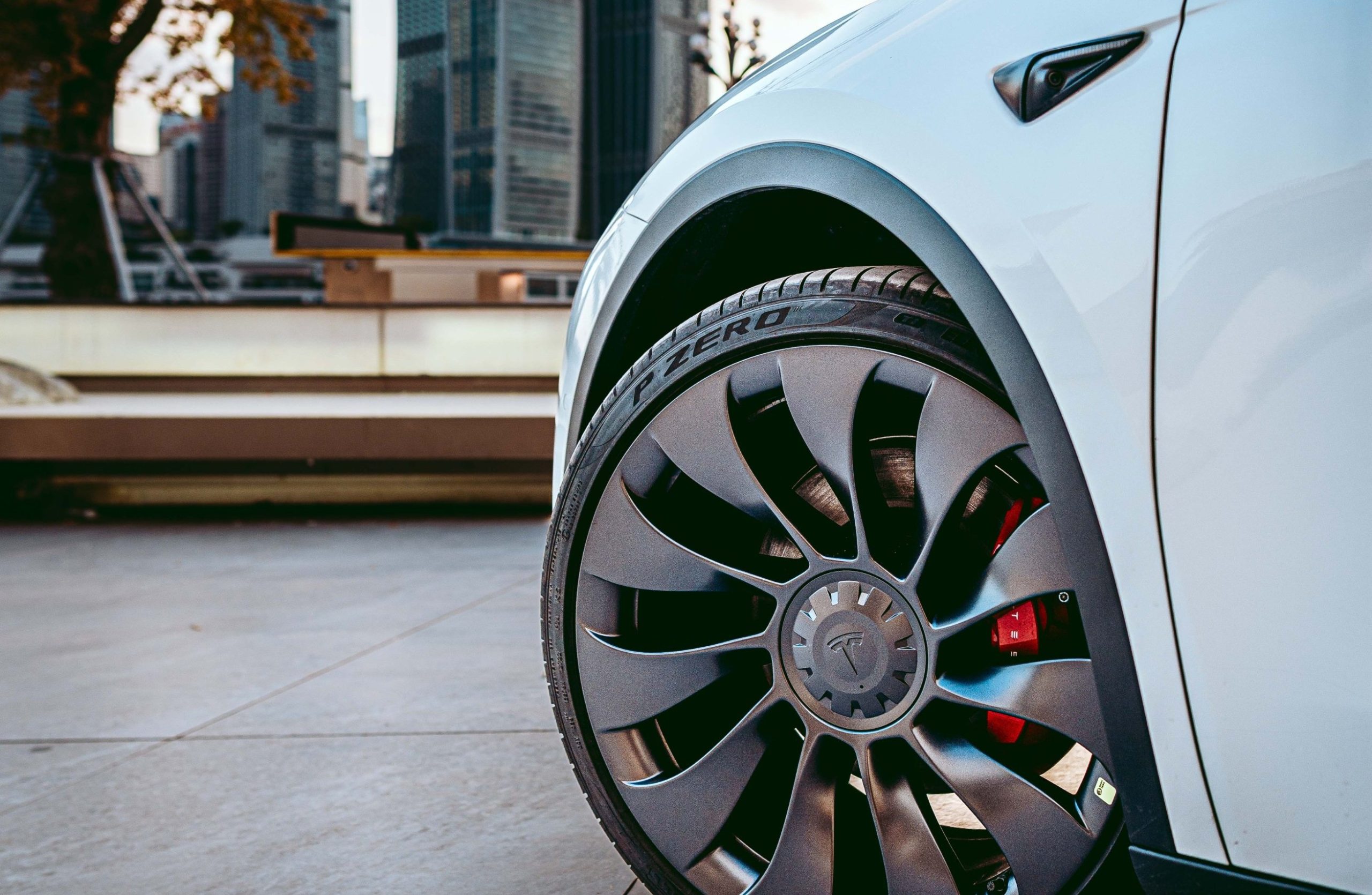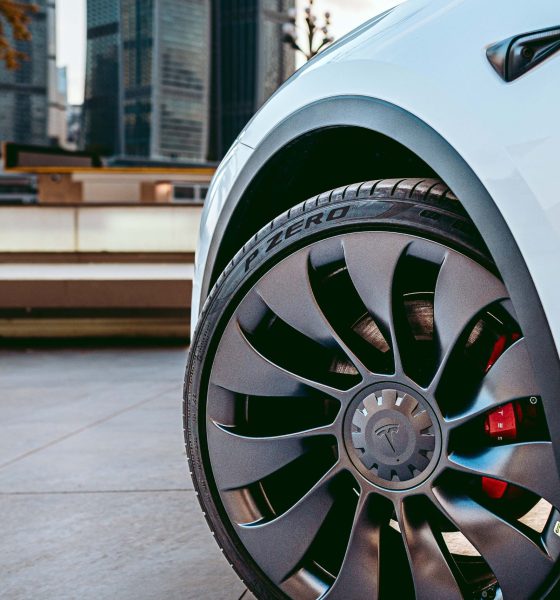

Investor's Corner
Tesla stock’s Twitter overhang highlighted in Morgan Stanley survey
Tesla as a company is doing very well, but one would not really see this from looking at TSLA stock’s performance this year. Amidst CEO Elon Musk’s turbulent acquisition of Twitter, Tesla shares have seen a notable dive, with the company losing over $600 billion in the past year.
Tesla bulls and bears have found common ground in the notion that TSLA stock has suffered this year partly because of Musk’s Twitter acquisition. And as it turns out, institutional investors that were surveyed by Morgan Stanley think the same way, too.
Morgan Stanley recently released a note highlighting what institutional investors think of Twitter’s effect on Tesla’s stock performance. According to Morgan Stanley’s note, a survey about Tesla’s Twitter overhang was sent to an email distribution list comprised of institutional investors and industry experts.
There were only two questions that were asked. “How much of Tesla’s recent underperformance o you attribute to the Twitter situation?” and “What impact do you believe Elon Musk’s acquisition of Twitter will have on Tesla’s business going forward?” The results were very telling.
Almost 75% of the respondents to Morgan Stanley’s survey noted that Musk’s Twitter acquisition has accounted for at least a significant portion of TSLA’s underperformance. About 40% of the respondents also noted that the Twitter situation has accounted for half or more than half of the weakness that’s been evident in the EV maker’s stock.
Apart from this, about 65% of the respondents to Morgan Stanley’s survey noted that Musk’s Twitter takeover would have a negative or slightly negative impact on Tesla’s business moving forward. That being said, 5% of the respondents expected a positive impact from Musk’s Twitter acquisition.


“As we highlighted in last week’s note, we see the situation at Twitter potentially exposing Tesla to risks along a number of areas including: (a) consumer sentiment/demand, (b) commercial partnerships, (c) government relations/support; and (d) capital markets support. While difficult to quantify, we believe there must be some form of sentiment’ circuit breaker’ around the Twitter situation to calm investor concerns around Tesla,” Morgan Stanley wrote.
That being said, Morgan Stanley remains optimistic about Tesla. Despite its reservations about Elon Musk’s Twitter overhang, Morgan Stanley still has a $330 per share price target for the EV maker and an “Overweight” rating. Morgan Stanley explained its stance on the EV maker in its note.
“Tesla is the only name we cover that generates a profit (before incentives) on the sale of EVs. Tesla is the only self-funding pure play EV name we cover and has achieved a unique position to secure supply of the battery metals and related up-stream supply necessary to produce EVs at multi-million-unit scale.
“In a slowing economic environment, we believe Tesla’s ‘gap to competition’ can potentially widen, particularly as EV prices pivot from inflationary to deflationary. The current price offers approximately 80% potential upside to our $330 price target, which is the highest upside to target we have seen from Tesla in over 5 years,” Morgan Stanley wrote.
Disclosure: I am long Tesla.
Don’t hesitate to contact us with news tips. Just send a message to simon@teslarati.com to give us a heads up.

Investor's Corner
Tesla stock closes at all-time high on heels of Robotaxi progress

Tesla stock (NASDAQ: TSLA) closed at an all-time high on Tuesday, jumping over 3 percent during the day and finishing at $489.88.
The price beats the previous record close, which was $479.86.
Shares have had a crazy year, dipping more than 40 percent from the start of the year. The stock then started to recover once again around late April, when its price started to climb back up from the low $200 level.
This week, Tesla started to climb toward its highest levels ever, as it was revealed on Sunday that the company was testing driverless Robotaxis in Austin. The spike in value pushed the company’s valuation to $1.63 trillion.
Tesla Robotaxi goes driverless as Musk confirms Safety Monitor removal testing
It is the seventh-most valuable company on the market currently, trailing Nvidia, Apple, Alphabet (Google), Microsoft, Amazon, and Meta.
Shares closed up $14.57 today, up over 3 percent.
The stock has gone through a lot this year, as previously mentioned. Shares tumbled in Q1 due to CEO Elon Musk’s involvement with the Department of Government Efficiency (DOGE), which pulled his attention away from his companies and left a major overhang on their valuations.
However, things started to rebound halfway through the year, and as the government started to phase out the $7,500 tax credit, demand spiked as consumers tried to take advantage of it.
Q3 deliveries were the highest in company history, and Tesla responded to the loss of the tax credit with the launch of the Model 3 and Model Y Standard.
Additionally, analysts have announced high expectations this week for the company on Wall Street as Robotaxi continues to be the focus. With autonomy within Tesla’s sights, things are moving in the direction of Robotaxi being a major catalyst for growth on the Street in the coming year.
Elon Musk
Tesla needs to come through on this one Robotaxi metric, analyst says
“We think the key focus from here will be how fast Tesla can scale driverless operations (including if Tesla’s approach to software/hardware allows it to scale significantly faster than competitors, as the company has argued), and on profitability.”

Tesla needs to come through on this one Robotaxi metric, Mark Delaney of Goldman Sachs says.
Tesla is in the process of rolling out its Robotaxi platform to areas outside of Austin and the California Bay Area. It has plans to launch in five additional cities, including Houston, Dallas, Miami, Las Vegas, and Phoenix.
However, the company’s expansion is not what the focus needs to be, according to Delaney. It’s the speed of deployment.
The analyst said:
“We think the key focus from here will be how fast Tesla can scale driverless operations (including if Tesla’s approach to software/hardware allows it to scale significantly faster than competitors, as the company has argued), and on profitability.”
Profitability will come as the Robotaxi fleet expands. Making that money will be dependent on when Tesla can initiate rides in more areas, giving more customers access to the program.
There are some additional things that the company needs to make happen ahead of the major Robotaxi expansion, one of those things is launching driverless rides in Austin, the first city in which it launched the program.
This week, Tesla started testing driverless Robotaxi rides in Austin, as two different Model Y units were spotted with no occupants, a huge step in the company’s plans for the ride-sharing platform.
Tesla Robotaxi goes driverless as Musk confirms Safety Monitor removal testing
CEO Elon Musk has been hoping to remove Safety Monitors from Robotaxis in Austin for several months, first mentioning the plan to have them out by the end of 2025 in September. He confirmed on Sunday that Tesla had officially removed vehicle occupants and started testing truly unsupervised rides.
Although Safety Monitors in Austin have been sitting in the passenger’s seat, they have still had the ability to override things in case of an emergency. After all, the ultimate goal was safety and avoiding any accidents or injuries.
Goldman Sachs reiterated its ‘Neutral’ rating and its $400 price target. Delaney said, “Tesla is making progress with its autonomous technology,” and recent developments make it evident that this is true.
Investor's Corner
Tesla gets bold Robotaxi prediction from Wall Street firm
Last week, Andrew Percoco took over Tesla analysis for Morgan Stanley from Adam Jonas, who covered the stock for years. Percoco seems to be less optimistic and bullish on Tesla shares, while still being fair and balanced in his analysis.

Tesla (NASDAQ: TSLA) received a bold Robotaxi prediction from Morgan Stanley, which anticipates a dramatic increase in the size of the company’s autonomous ride-hailing suite in the coming years.
Last week, Andrew Percoco took over Tesla analysis for Morgan Stanley from Adam Jonas, who covered the stock for years. Percoco seems to be less optimistic and bullish on Tesla shares, while still being fair and balanced in his analysis.
Percoco dug into the Robotaxi fleet and its expansion in the coming years in his latest note, released on Tuesday. The firm expects Tesla to increase the Robotaxi fleet size to 1,000 vehicles in 2026. However, that’s small-scale compared to what they expect from Tesla in a decade.
Tesla expands Robotaxi app access once again, this time on a global scale
By 2035, Morgan Stanley believes there will be one million Robotaxis on the road across multiple cities, a major jump and a considerable fleet size. We assume this means the fleet of vehicles Tesla will operate internally, and not including passenger-owned vehicles that could be added through software updates.
He also listed three specific catalysts that investors should pay attention to, as these will represent the company being on track to achieve its Robotaxi dreams:
- Opening Robotaxi to the public without a Safety Monitor. Timing is unclear, but it appears that Tesla is getting closer by the day.
- Improvement in safety metrics without the Safety Monitor. Tesla’s ability to improve its safety metrics as it scales miles driven without the Safety Monitor is imperative as it looks to scale in new states and cities in 2026.
- Cybercab start of production, targeted for April 2026. Tesla’s Cybercab is a purpose-built vehicle (no steering wheel or pedals, only two seats) that is expected to be produced through its state-of-the-art unboxed manufacturing process, offering further cost reductions and thus accelerating adoption over time.
Robotaxi stands to be one of Tesla’s most significant revenue contributors, especially as the company plans to continue expanding its ride-hailing service across the world in the coming years.
Its current deployment strategy is controlled and conservative to avoid any drastic and potentially program-ruining incidents.
So far, the program, which is active in Austin and the California Bay Area, has been widely successful.








